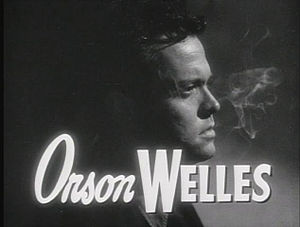Now that 3D is the big (but potentially transient) craze, there's tremendous pressure on film producers and distributors to release all their new films in 3D, whether or not they were shot that way. The recently-released remake of "Clash of the Titans" was shot in 2D, and then hurriedly digitally converted to 3D in an eight-week process. As widely reported, the results were far from impressive; most reviews said that the characters and creatures looked like 2D cardboard cutouts layered in front of the background.
Both James Cameron and Michael Bay have spoken out against converting 2D films to 3D, saying that the to-date dismal results of the conversion process could kill off audience interest in 3D. However, there's no sign that the industry is paying much attention to their cautions. In fact, there are plans to convert the entire Star Wars series to 3D for reissue, as well as a host of other films and even television shows.
It reminds me of Ted Turner's efforts years ago to colorize a library of black and white films he had acquired from MGM and Warner Bros. Turner faced blistering criticism but pressed on, saying that there was no market for black and white films on television or home video. However, his own Turner Classic Movies, as well as TV Land and other cable channels, showed that there was still a big audience for black and white movies and television shows.
The 2D to 3D craze reminds me a lot of colorization: It's expensive, it doesn't work very well, and lots of people are complaining about it. It's likely that 2D to 3D is also going to have much the same life as colorization. Within a year or two, producers and distributors will realize that conversion isn't the way to go, and that 2D isn't so bad after all.
Showing posts with label James Cameron. Show all posts
Showing posts with label James Cameron. Show all posts
Sunday, May 09, 2010
Saturday, December 19, 2009
If you want a better tool, build it yourself
I just finished reading a great post on Gizmodo by Frank Beacham about Orson Welles's last project and his fascination with the then-new Sony Betacam. Welles took one look at the first professional camcorder and intuitively understood what its impact on video and film production would be. Beacham's article brought to mind how many great filmmakers over the years were also technologists: Not only did they use the tools available, but they helped to design them (or actually designed them themselves.) The recent list includes:
If you want a better tool, build it yourself.
- Francis Ford Coppola, who partnered with Sony for many years and was one of the first to apply video to motion picture production
- George Lucas, who developed one of the first computer-based non-linear editing systems, owned Pixar (and still owns ILM, Skywalker Sound and Lucas Digital) and pushed the limits of digital production, post-production, computer animation and special effects
- Garrett Brown, a cinematographer who invented the Steadicam and Skycam and changed the way that both motion pictures and sports television look
- James Cameron, who first pushed the envelope of computer graphics and special effects, and later, with his partner Vince Pace, created the Fusion 3D system that's helping to make 3D a core production and display technology
If you want a better tool, build it yourself.
Subscribe to:
Posts (Atom)
![Reblog this post [with Zemanta]](http://img.zemanta.com/reblog_e.png?x-id=a99cfb3c-8881-4792-a0a4-f1178ec7cc22)

![Reblog this post [with Zemanta]](http://img.zemanta.com/reblog_e.png?x-id=e00208d7-50de-4ffa-84d5-66f6ce4a0741)